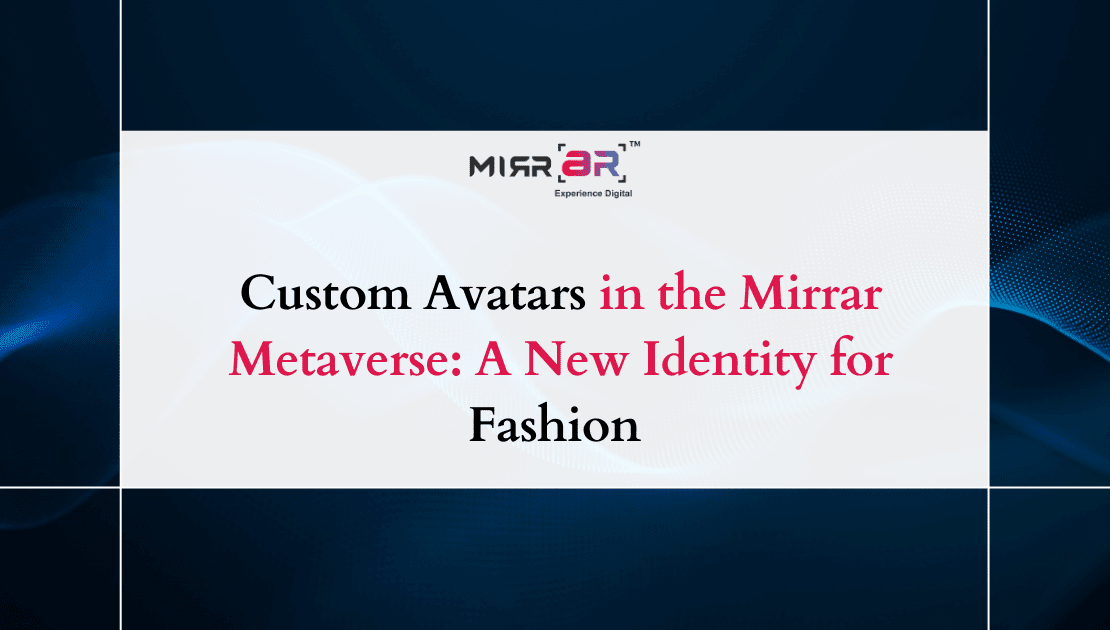
Fashion has always been about identity. The clothes we wear, the accessories we choose, and the way we present ourselves are reflections of who we are—or who we aspire to be. In the digital world, however, self-expression has often felt limited. Flat profile pictures, static filters, and preset avatars didn’t quite capture individuality the way real fashion does. But with the rise of the Mirrar Metaverse, that’s changing. Custom avatars are ushering in a new era where digital identity meets fashion-forward creativity, giving users the power to express themselves like never before.
Fashion Meets Digital Identity
In physical life, fashion is deeply tied to self-expression. We dress differently for work, celebrations, and leisure because clothing communicates moods, roles, and aspirations. In the metaverse, avatars play the same role—except here, the possibilities extend far beyond the physical world.
Custom avatars in the Mirrar Metaverse allow individuals to not just replicate their real-world look, but also experiment with styles, personas, and aesthetics that may not be possible offline. From traditional ethnic attire to futuristic streetwear, users can build a wardrobe that reflects multiple layers of their personality. This makes avatars more than digital placeholders—they become dynamic fashion canvases.
Why Avatars Matter in Fashion’s Digital Future
At first glance, an avatar might just seem like a virtual body. But in immersive retail spaces like Mirrar, avatars serve a deeper purpose: they are the bridge between consumers and brands. When users walk into a metaverse store, their avatars carry their sense of style, preferences, and aspirations.
Fashion brands can leverage this by offering customizable outfits, accessories, and even signature looks designed specifically for avatars. Just as physical clothing tells a story about who we are, digital fashion items within avatars create unique identities in the metaverse. This shift is redefining how we perceive value in fashion—where owning a digital outfit can be just as significant as buying a real-world one.
Customization: Beyond Just Looks
The real power of custom avatars in the Mirrar Metaverse lies in personalization. Unlike generic character creators, Mirrar emphasizes individuality. Users can fine-tune facial features, skin tones, hairstyles, and even cultural markers like jewelry, fabrics, and traditional attire. This ensures inclusivity and authenticity, allowing everyone to feel represented.
But the customization doesn’t stop at appearances. Avatars can also reflect behavior and movement styles—how they walk, pose, or even interact in virtual spaces. For fashion lovers, this means their digital persona can showcase not just what they wear, but how they wear it.
Avatars as Trendsetters
In the physical world, influencers drive trends by showcasing styles that audiences aspire to. In the Mirrar Metaverse, avatars are the new influencers. Custom avatars styled with exclusive collections can walk virtual runways, attend digital fashion weeks, and even share looks on social shopping platforms.
This creates a powerful cycle: users design unique avatars, brands release limited-edition digital fashion, and communities engage with these new trends in real time. For the first time, fashion isn’t bound by material constraints—it can spread faster, reach wider, and evolve endlessly in digital form.
Opportunities for Fashion Brands
For retailers and designers, custom avatars open up unprecedented opportunities.
- Virtual Try-On Integration: Customers can dress their avatars in real-time to see how products look before purchasing.
- Digital-Only Collections: Brands can release exclusive metaverse-only pieces, adding scarcity and desirability.
- Cultural Representation: Fashion houses can experiment with ethnic wear, festival-specific outfits, or futuristic interpretations.
- Community Building: Avatars create shared spaces where style becomes a conversation, not just a transaction.
By designing for avatars, brands aren’t just selling clothes—they’re selling experiences, emotions, and digital identities.
The Psychology of Avatars: Why We Care So Much
Why do people invest so deeply in avatars? The answer lies in psychology. Our digital self is an extension of our real identity. When we dress our avatars, we project how we want to be seen in a social, immersive space. This creates a sense of ownership and belonging, which makes fashion purchases in the metaverse highly personal.
Avatars also allow users to experiment without risk. Want to try a bold hair color, wear avant-garde couture, or step into another culture’s fashion respectfully? Avatars provide that freedom. This experimentation builds confidence, influences real-world choices, and makes fashion a playful, creative process.
Avatars and the Future of Meta-Shopping
As shopping shifts from e-commerce to meta-shopping, avatars will become central to the experience. Picture walking into a virtual boutique in the Mirrar Metaverse with your custom avatar. You try on new outfits, adjust accessories, and even receive recommendations based on your style history. Your avatar becomes the digital twin that makes shopping seamless, personalized, and interactive.
Moreover, avatars will play a key role in social shopping. Friends can gather in virtual spaces, compare looks, and shop together—all through their avatars. The act of shopping transforms from a task into a social event, powered by self-expression.
Conclusion: A New Identity for Fashion
The Mirrar Metaverse is not just building a space for shopping—it’s building a culture of digital self-expression. Custom avatars sit at the heart of this revolution, offering users a chance to define who they are and who they want to be. For fashion, this means moving beyond fabric and design into identity, imagination, and interaction.
In this new landscape, every avatar becomes a runway, every outfit a story, and every shopper a trendsetter. Custom avatars are more than just pixels—they are the new identity of fashion in the metaverse.
